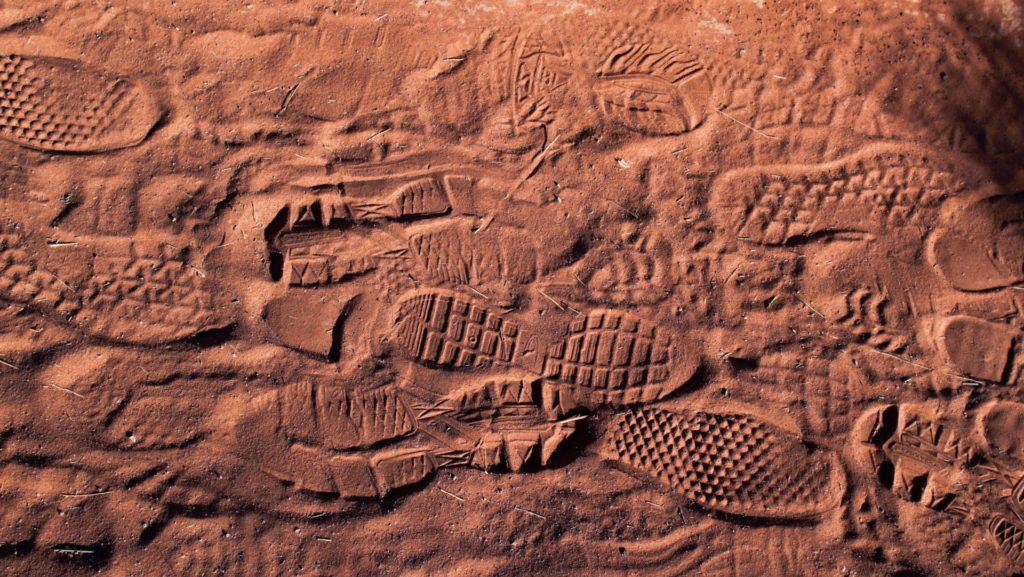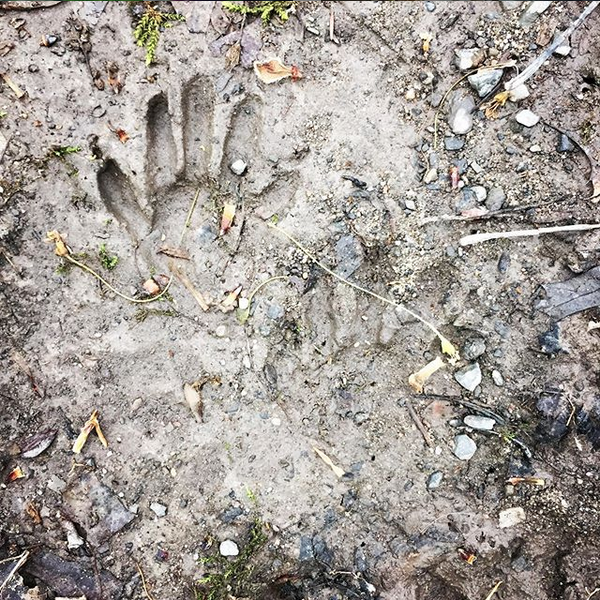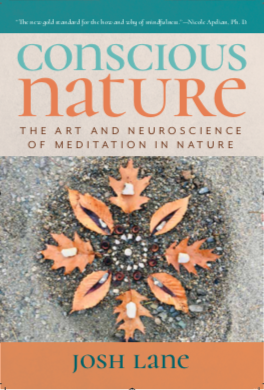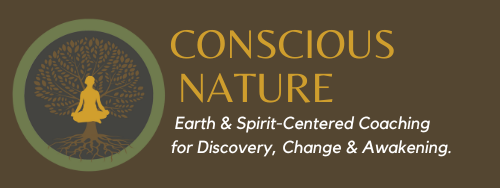The art of tracking is among the most ancient skills known to humanity. Tracking extends one’s senses in a multiplicity of directions, from awareness of the patterns within oneself to the larger cycles at play in any scenario. Driven by the need to survive — and pulled by the curiosity to explore — the art of reading Nature’s signs and signals has intertwined with the development of human cognition and creativity. The skills of tracking have connected people to their environment in every landscape around the world, from tundra to desert.

The ability to reason, to connect symbolic imagery to observed traces, and to predict what might happen next from clues derived in the trail are all integral to the art. We draw upon these same essential neural capabilities in daily life, whether we are tracking an animal for sustenance in the wilderness, or tracking a stock on Wall Street and predicting market outcomes.
Waking Up Our Neurobiology Through Tracking

Although many today don’t have a need or desire to follow footprints in order to find food, there are still numerous reasons why we might cultivate the art of tracking as a regular practice. When we track, we “wake up” the most primal layers of our neurobiology (primal here meaning “first,” or “most essential”).
We invite our senses to interact with our surroundings in a deep, rhythmic way. We search for meaning in clues both obvious and subtle. We discover patterns and interconnections hidden in plain sight, and we learn about our own capabilities and creativity in the process.
As we track, we also expand our notions of Self and Environment. We realize an intimate connection between the two — that the places we inhabit shape and influence us, and that our presence likewise impacts the living story of our place. The more that we get to know a place and the beings that dwell there, the deeper we realize just how mysteriously intertwined all of life, the Universe, and Everything really is. A sense of personal connection and empathy arises as we attune to our place in this way. We start to care in a deeper way, because we feel connected to the larger flow of Nature’s cycles.
Tracking as an art form invites us to step out the door and take part in an epic journey. But how do we open the door of perception and begin this quest?
Cultivating Mindful Awareness in Tracking
One of the core skills of awareness we use in tracking is mindfulness. This is the practice of “in-the-moment” perception. If the mind is not centered in the moment, then we are missing a lot of what’s going on in Nature. The quick alarm cry of a bird as a hawk soars past, the flick of a deer’s ear hidden in the brush, or the faint scent of an animal passing by on the breeze are clues that we will have a much better chance to detect if we are paying active attention. By focusing on each sense individually or in combination, we can train the mind to become more present to what is happening now.
As we mindfully connect with the animals and patterns of the landscape, we also begin to realize the interplay of our inner landscape and how it relates to what is going on around us. The way we carry our bodies, the speed we walk, and the “vibe” we put out all influence the way animals react to our presence (or lack of presence). Over time, we can learn how Nature responds to us in our various moods and inner states. As we open to the patterns of the natural world, we find more peace, aliveness and creativity infusing our mindset. Then, we can learn to shift our internal states to match Nature’s flow. This journey begins with mindful awareness.
Tracking Beyond the Mud Puddle

As my friend Jon Young often says, “tracking isn’t just looking at footprints in a mud puddle.” In a broader view, tracking is a study in pressure. Nature seeks a balance, but a constant force of push and pull exerts its influence on everything from the sky to the ground, and beyond. Each environment is a space filled with dynamic motion, of energy ceaselessly transforming. This is the situation we track within, no matter where we are. We find our senses met with a variety of cycles, each moving to unique but often intertwined rhythms and cadences.
So, what we can we track ? Everything! Where can you track? Anywhere!
What will you find? Well, you’ll have to “go to know.”
Hear Tracking Stories & Tips on the Sitka Nature Show
For ideas on how to get started, check out my visit on the Sitka Nature Show #207. On the show, I share more about the art of tracking and how to bring it into your life. You can download the show or stream it from the Sitka Nature blog, run by my friend Matt Goff.
[Author’s note: Matt is an accomplished naturalist, and it’s well-worth perusing his epic photos and intriguing observations of the species and landscapes of Sitka. A great example of realizing connection with place through tracking!].What tracking practices do you have, and how does tracking help you in your life? What connections with your environment do you enjoy cultivating? Drop me a comment at the bottom of the page.
Deepen Your Journey Into Nature

The book goes in-depth through how to immerse in these four crucial arts of awareness (Arrival, Tuning In, Expansion, and Gathering). If you’d like a deep dive into each of these topics, I invite you to go further with the practices offered there.
Readers are guided in:
- How to explore a full set of mindful sensory practices,
- Journaling and observation techniques,
- Qi Gong skills for centering, meditations for learning to read Nature’s language,
- And much more… including transformative nature mentoring skills, and a framework of neuroscience that reveals what’s happening in the brain while all this is going on.
Experience mindful meditations for connecting more deeply with the Nature within and around you
Expand your senses as you relax into Nature’s patterns
Feel more at home in the outdoors, and more grounded in your body wherever you go
Learn how to harness the Five Key Brainstates of Awareness for well-being and creativity
Learn More @ https://www.consciousnature.net/get-the-book
